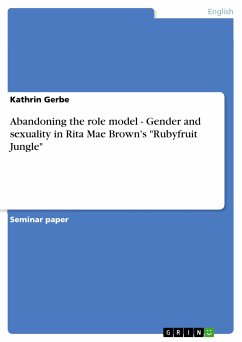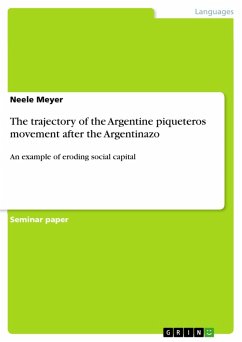Seminar paper from the year 2005 in the subject Romance Languages - Italian and Sardinian Studies, grade: 1,0, University of Siena (Facoltà di Lettere e Filosofia in Arezzo), course: "Politica, società e cultura nell'Italia degli anni Settanta", language: English, abstract: "...di fare bambini, Lavare i piatti stirare pannolini, Avere un uomo che fa da padrone, E ci proibisce la contraccezione!, Noi siamo stufe della pubblicità, Che deforma la nostra realtà, Questa moderna schiavitù, Da oggi in poi non l'accettiamo più." These impressive verses are quoted from a popular protest song written by theMovimento Femminista Romanoin 1973. It already gives us a certain impression of what women felt and thought during this time. The main question is why are they unsatisfied with their own lives which they see as a form of "modern slavery"? What makes Italian women's lives so extremely unbearable that they have enough of their husbands and the public opinion about women's lives in the Italian society like they chant in this protest song? The following paper will try to present the development of the Italian women's liberation movement and how the historical context influenced women and their situation in the different regions of Italy. Furthermore, the aim of my term-paper is twofold. On the one hand I will try to describe and analyze the historical setting and background of Italy in the 1960s and early 1970s. On the other hand my term-paper includes the analysis of the women's living conditions in Italy during the first decades after the Second World War and shows how economical and social changes caused a new way of consciousness and thinking within the Italian society. The main topic of the second part is a short presentation of the Italian women's movement itself. An analysis of the contemporary living conditions is the main objective. Besides the introduction of the Italian women's movement, I will try to present different points of view and individual aims of the single groups and how they tried to change the Italian society. In addition to this, the last chapter will pay attention to the different kinds of protest movements, trying to present some of the most important groups and unions. Nevertheless, the paper can only present a limited number of groups and movements regarding the rich diversity of the whole movement.
Dieser Download kann aus rechtlichen Gründen nur mit Rechnungsadresse in A, B, BG, CY, CZ, D, DK, EW, E, FIN, F, GR, HR, H, IRL, I, LT, L, LR, M, NL, PL, P, R, S, SLO, SK ausgeliefert werden.









